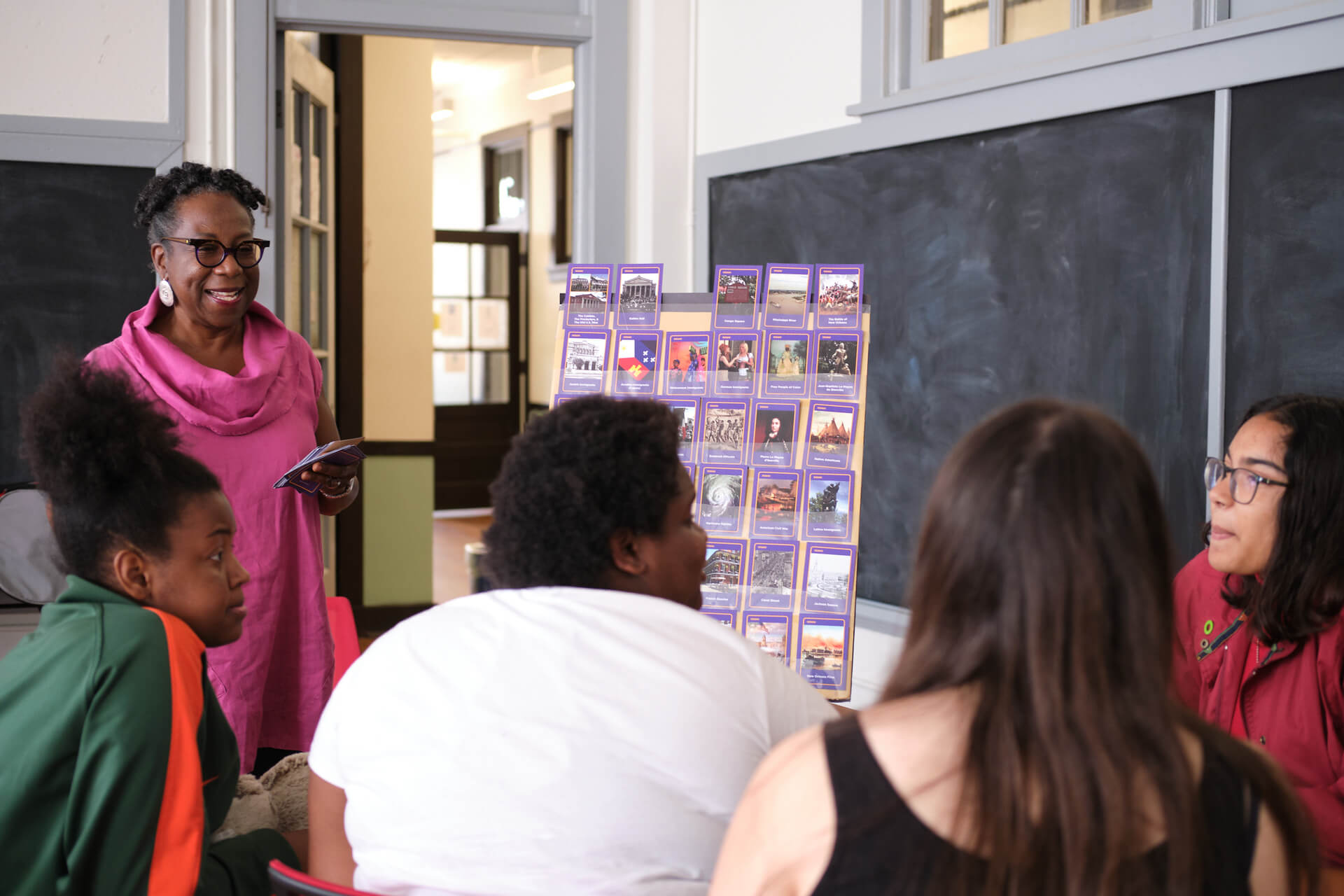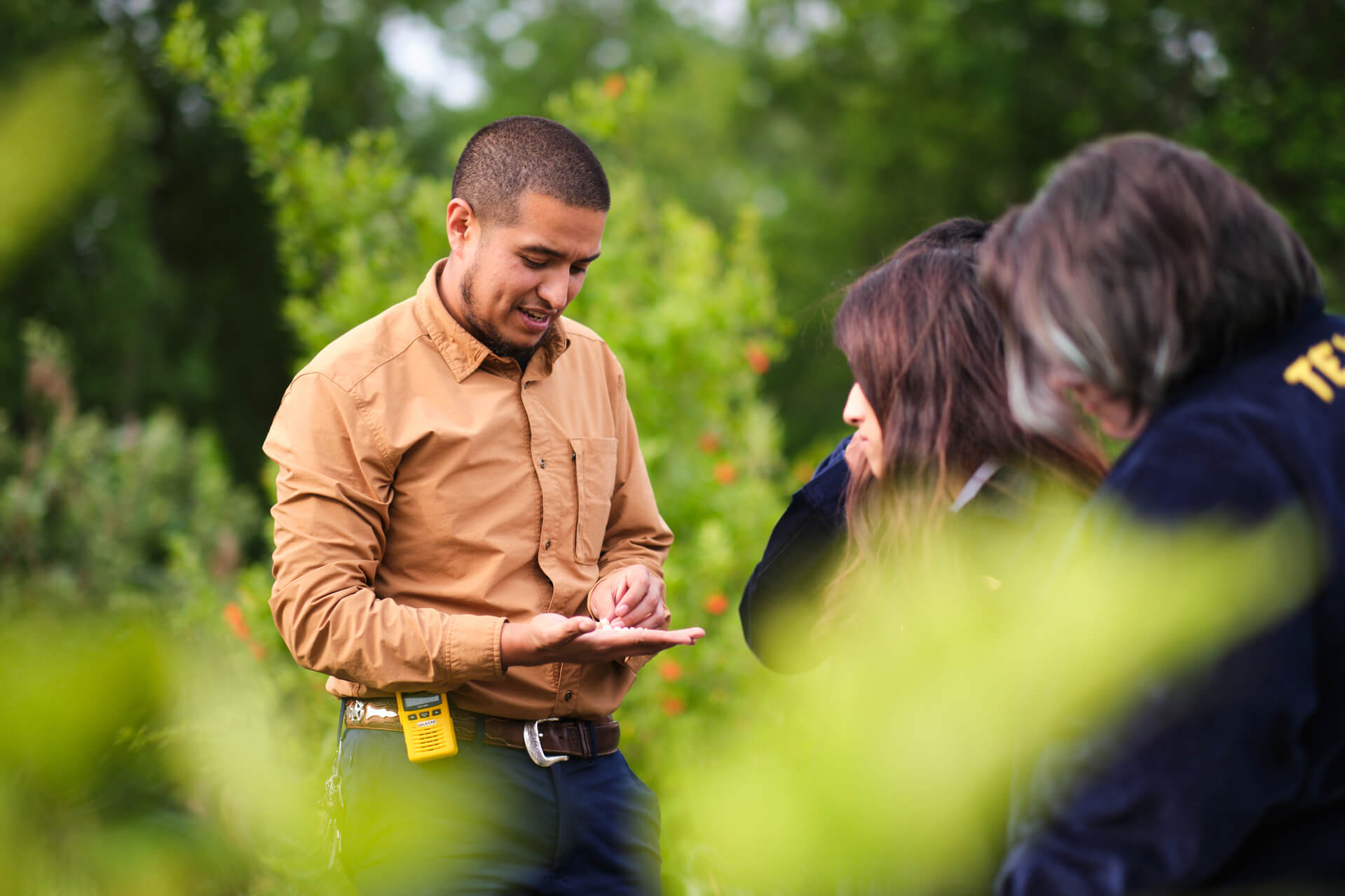Educator Tips on Enhancing Classroom Culture
Subscribe to the XQ Xtra Newsletter New Harmony’s Freddi Evans builds a culture of inclusion…


Subscribe to the XQ Xtra Newsletter

One of the first steps in developing a classroom management strategy is establishing a guideline for expectations and behaviors. Whether you’ve been teaching for decades or this is your first rodeo, communicating to students about class expectations goes a long way in creating consistency.
Many of us high school teachers understand how invaluable it is to develop a set of norms and procedures starting on day one. You greet students, direct them to a seat, ask them about themselves with a tried and true icebreaker, and then dive into your expectations for their behavior. You review your classroom procedures multiple times on the first day, once for each class.
This routine is convenient and establishes control of the room under our guise. When I first started teaching at PSI High, an XQ Super School in Sanford, Florida, I was challenged with enhancing this routine. PSI’s program coordinator and instructional coach asked me to reflect deeply on this: do the rules and routines in my classroom intentionally center on the students, or do they just make my life easier? After my existential crisis, my Instructional Coach made it plain: start with your students.
I put myself in my student’s shoes. As I planned my opening day procedures, I tried to imagine their perspectives. A student with seven subject periods will hear these introductions up to seven times on their first day. They’ll listen to seven ways to sit in their seats properly, seven ways to submit an assignment correctly, and seven ways to remember how their supposedly different courses are the same factory models of learning.
Is this the classroom culture we want to instill?

Classroom Culture that is Student-Centered
If we want to rethink high school, then we need to create a space that genuinely puts students at the center of their learning. We have to approach our classroom procedures from the perspective of our students. Is the culture we’re creating in the early part of the school year really setting students at the front of their learning experience? Also, are we being consistent in following through with them throughout the school year?
Creating a class culture doesn’t just have to be about behavior expectations and operating procedures. It can be about making sure students are aware that they’re safe and welcomed. Student-centered classroom culture shows students that we value them as people.
Below are five strategies to explore and learn that can help educators enhance their classroom culture to be more student-centered. They’re mindsets that educators can bring on the first day, the first month, and revisit all year long to fortify a student-centered learning environment.
1. Seeing Your Students
Seeing our students means looking beyond what our eyes tell us. Our students are navigating an evolving world with uncertain futures. Our XQ Learner Outcomes help educators target social awareness, social agency, and interpersonal skills. To prepare our students for the future, we need them to become generous collaborators, which means that we need to establish a class culture that values people for their experiences and treats them as assets for cooperation.
To truly witness our students as people, we need to learn about their histories, their realities, and their ambitions. Our students each have a lived experience, and we should honor it by appreciating it. Building an environment of inclusion reinforces to students that they belong and that this learning space belongs to them.
Aim to create a space where students can share through storytelling and inquiry. Set a tone that says it’s not just about achieving the standards, but about achieving empathy and cooperation with our peers. Consider how your introductions allow students to share not only their names, but also aspects of their culture, identity, and interests. Doing so can enable students to create connections with their peers and help teachers build stronger relationships with their students. XQ’s Design Principles focus on this aspect of teaching, and we believe building caring, trusting relationships is key to strengthening high schools.
2. Create a Culture of Curiosity
Properly managing how students respond in class is critical to being an effective teacher. How and when students engage with peers and your classroom prompts depends on the framework you establish. In inquiry-based learning models, emphasis evolves students beyond comprehension and literacy strengthening and puts students in active mindsets to spark curiosity.
Building a positive classroom culture with meaningful inquiry can prevent boredom and promote student agency. Another one of our design principles, building meaningful, engaged learning experiences, supports student-centered learning. Delivering information in a constant, standard format creates a monotonous routine, one that can be disengaging and unmotivating. While there is value in repetition, like practicing music, athletics, or art, there is an inherent purpose to those skills. Inquiry-driven practices can help fortify literacy and numeracy skills in students, promoting their academic knowledge well throughout the school year.
To create a culture of discovery and curiosity, consider the pathways that have been outlined for student interests. Are students being asked to bring their lived experiences to the table? To make connections to the real world? Or to identify the purpose of their learning? These kinds of prompts give students agency and authenticity to their learning, setting the tone for meaningful inquiry. It’s essential to ask students to reflect on the learning they’ve engaged with, as it will further promote student engagement as an investment in learning, and in their selves, fortifying a student-centered culture.

3. Hear Your Students
When we hear our students engaged in class discussions, responding to our prompts, and asking questions about complex topics, we see these as key indicators of active learning. But what about students who are quiet, apathetic, or might be dismissive during lessons? Sometimes students will push back out of frustration, and these behaviors could be indications of other factors. Student disengagement may be a result of our disengagement of youth voice.
Silence and anger can mean the same thing: “I’m not connecting.” This is when we need to understand that some students may be speaking unconsciously about other concerns. These are critical moments when we can pause and actively listen to make our culture more student-centered. Including student voice can help us identify if our lessons are not engaging enough or if they feel their concerns are not valued.
Beyond just active listening, building a student-centered class culture means considering how students can inform you how they’re doing. Quadratics or AP content may not be at the top of their minds if they’re more worried about food, sleep, and stability. It’s important to think not only about how students can communicate with teachers but if they’re able to access teachers fairly and quickly. It can be a struggle to balance individual conferences alongside instruction, so it’s beneficial to review how students can communicate with you where they are in both discrete and direct ways.
4. Choose Positive Language
How we communicate with students on a daily level can have an incredible impact on how students perceive the world. The language we choose can be as ubiquitous as our daily interactions with students, and it can reinforce a culture that views students as assets to everyone’s learning. Teenagers demand socialization, and we must build structures that support students not only in making meaningful connections but making connections that promote a language of inclusivity and growth.
Students will model what we do, so how we communicate with them and the tone of language we choose can either strengthen relationships or create gaps in understanding. We want to meet our students where they are and establish norms in the classroom so everyone uses terms that promote positivity, academics, and inquiry. When establishing your classroom norms, consider approaching discussions with these types of phrases:
- I like, and I wonder…
- Yes and…
- I want to understand more about what you mean…
I often use humor to both connect and defuse tension. It’s part of many people’s personalities, and using humor in class is a low-stake, high-reward method to engage with students. Sarcasm can really enhance relationship building for some students, but it can also go over the heads of others. Understanding how your students use and respond to sarcasm can help educators reinforce best practices for language. A class culture that is student-centered allows students to express themselves freely but in a manner that promotes inclusion and optimism.
5. Reorient Your Space
Another key aspect of classroom management that contributes to the culture is room layout. How you arrange desks, where you sit, and where students go for materials has implications for students’ agency. Being student-centered doesn’t necessarily mean the students dictate how or where their seats are. Rather, it focuses on creating an environment where students can easily access resources—materials, technology, or even the teacher’s attention. XQ addresses this with the design principle, smart use of space, time and technology.
Some questions to consider when orienting your space focus on student mobility:
- Is your space designed to be inclusive and engaging to all students, including those with special needs?
- Are they able to know where and how to quickly access materials they need?
- Can they work in dynamic groups efficiently?
- Are there spaces in the room easy for students to hide away from or disappear from the teacher’s line of sight?
- What are students hearing in the classroom, and does it support their needs?
Find out from the students what they value most in the classroom and how the space can accommodate those needs.
Orientation of our classroom is itself an art and a visual statement. We can design for accommodations, for flexibility, and specific experiences, such as Socratic circles, debates, or mock courtrooms. While educators can create a layout that is easy for students to navigate, it’s important teachers build a space that works for them. Teachers should be able to move freely while easily seen and heard by students. A flexible space should allow teachers to quickly scan the classroom and address student needs.
One final reminder on the layout: a student-centered room highlights student voice and showcases their work. Classroom “eye candy,” or the unique features that draw students’ interests, should make the students feel included, motivated and safe.
This article appears as a shorter newsletter for subscribers to the XQ Xtra! If you or a colleague are interested in receiving more resources about how to rethink high school education, sign up for the XQ Xtra Weekly Newsletter.
Additional Resources
With your coffee: “Playing to Learn in Middle & High School Classrooms”
I found that this article gave me permission to bring Ticket to Ride into the classroom while doing a unit on World War I in our English and World History courses.
For your PLC: “Design Principles, Smart Use of Space, Time & Text”
XQ’s Head of Schools, Mary Ryerse, outlines the need-to-knows of one of our fundamental design principles and how you can make it actionable in your classroom programs.
Let’s ReThink, Together.
Share with us on social using #ReThinkHighSchool
Photos by Maya Wali Richardson









